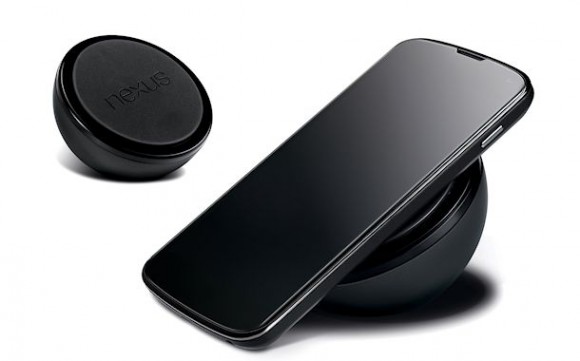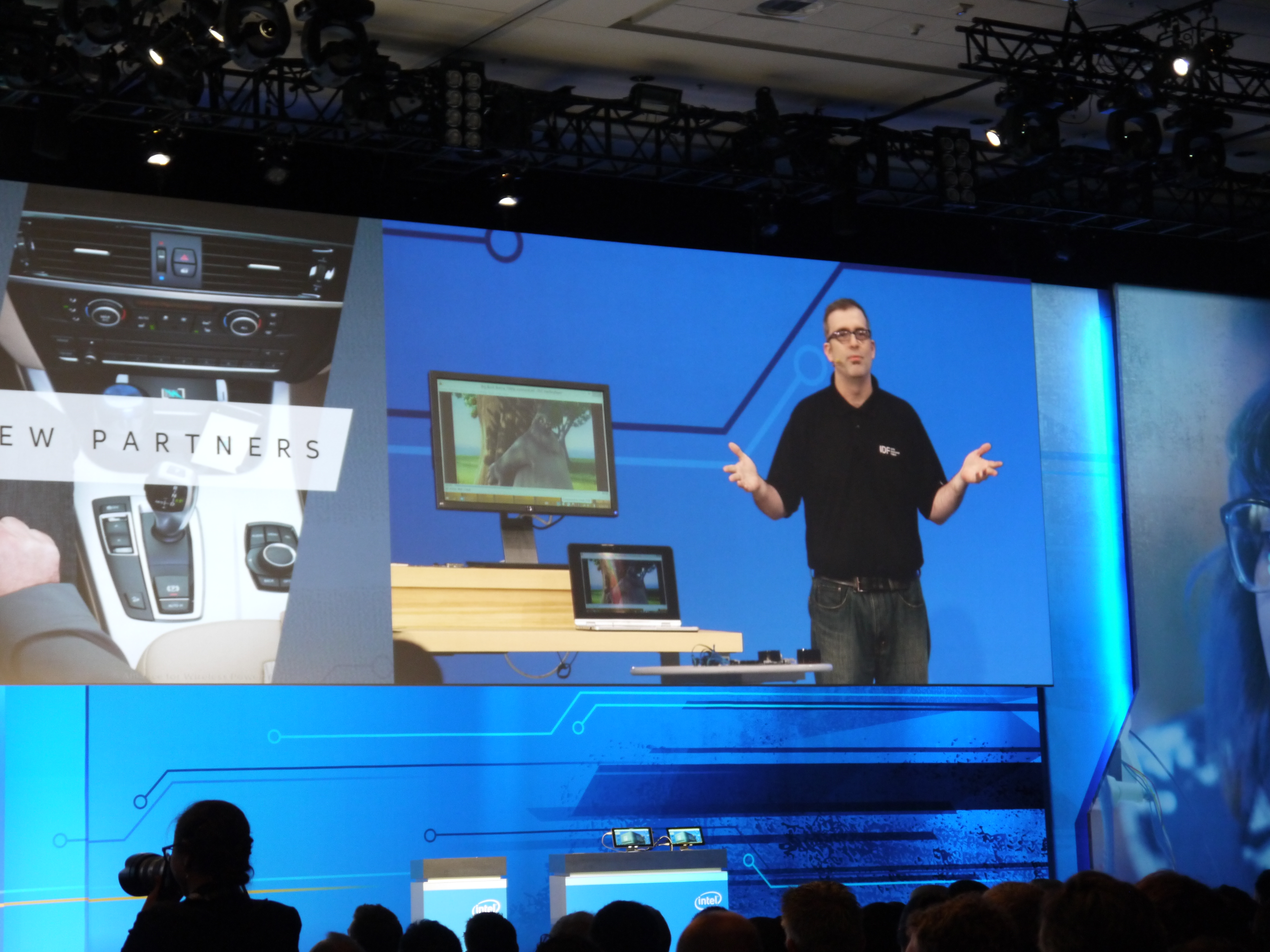From WiFi To Qi: Technologies To Free Us From Cable Tyranny
Intel recently showed off three wireless technologies that it hopes will eliminate our need for cables, whether it's for displays (WiDi), peripherals (WiGig) or even power charging (Rezence). With more new wireless protocols appearing or old ones improving all the time, it seems the move to having everything completely wireless is inevitable.
Some of these new (or older) protocols will have to win, though, so all device manufacturers can start using single standards without fragmenting the market.
To get rid of cables completely, we'll need high-performance, easy-to-use wireless technologies in the following areas:
- Internet connectivity
- Streaming content to displays
- Connecting peripherals
- Power charging
Internet Connectivity
Wi-Fi, as a replacement for home network cables, is a no-brainer these days. Almost everyone has a Wi-Fi router at home, so there's usually no need to use the local network cable anymore with notebooks or PCs. Wi-Fi routers have been fast enough since the 802.11n standard came out, which offers 150 Mbps connections on either 2.4 GHz or 5 GHz bands.
Since late last year we've begun seeing the new 802.11ac Wi-Fi standard come to market. This one promises speeds of up to 867 Mbps in the "first wave," and we should see speeds of 1.3 Gbps or even higher in the "second wave." Right now, our Wi-Fi speeds, whether from 802.11ac or even 802.11n, is overkill for our Internet connections (unless you're getting the signal through multiple walls), but once most of us start getting 1 Gbps Internet connections in a few years' time, we'll be glad that 802.11ac second-wave routers can be found for $50 or less in every store. Routers using brand new standards tend to be priced at $200-$300 when they first appear on the market, so it takes a few years to reach the much more mainstream-like $50 price point.
The second wave of 802.11ac Wi-Fi also brings another vital technology called MU-MIMO that can be used to serve multiple clients at high speed. This could make the growing transition from cellular phone calls to Wi-Fi calls even easier for millions of people over the next few years, once Wi-Fi vendors start utilizing this standard.
Streaming Content To Displays
There have been various technologies trying to properly stream content to our bigger displays, and so far that hasn't been a good thing, as the current ecosystem for wirelessly streaming of content to displays is kind of a hodgepodge. There's DLNA, Wi-Fi Direct, WiDi, Miracast, Apple's AirPlay, and Chromecast's DIAL protocol.
Get Tom's Hardware's best news and in-depth reviews, straight to your inbox.
Some of them, like Apple's AirPlay, don't even try to be industry-wide standards, while others like DLNA have given OEMs too much control over customization, resulting in incompatible DLNA-enabled devices. Despite the fact that DLNA had existed for years before most of the others appeared, the fact that it wasn't a strict standard that everyone had to use as intended has been problematic.
Wi-Fi Direct is Wi-Fi standard that enables devices to connect to each other and enable any kind of file transfer without the need for an AP (access point), like a router. This works in a similar way to Bluetooth, but at much higher transfer speeds.
WiDi (Wireless Display) is a technology developed by Intel to enable users to stream music, movies, photos, videos and apps wirelessly to a TV, from WiDi-enabled devices. The technology has never caught on, and it was only in version 3.5 that Intel added support for the slightly more popular Miracast standard to WiDi.
Miracast has been developed from the start to be used by multiple OEMs as competition to Apple's proprietary AirPlay. Unfortunately, the OEMs don't seem to have learned any lessons from the DLNA failure, because each one of them has renamed their own implementations to something entirely different, such as: AllShare Cast (Samsung), SmartShare (LG), screen mirroring (Sony) and so on. The disadvantage is that users get confused about which "standard" supports what and just give up on using the technology altogether, which benefits none of the Miracast adopters.
AirPlay allows users to easily stream video from an iPhone, iPad or Mac to an Apple TV. Despite being Apple's proprietary wireless display technology, and only working with Apple devices, it remains one of the most popular such technologies from the bunch, thanks to Apple TV's relatively low price and AirPlay's ease of use.
While Chromecast has a feature similar to AirPlay and Miracast (that doesn't work spectacularly well), the real "magic" happens thanks to the DIAL (Discover and Launch) protocol that just needs to send links to media from the web. Then, the Chromecast, which is a cheap receiver that plugs into your TV's HDMI port, can play that video in its own browser. The advantage of this solution is that it doesn't need special hardware to work with the mobile devices being used to play the content. How much content you can watch is, however, limited by third party support from video services.
Connecting Peripherals
Wouldn't it be wonderful if we only needed one device to do anything we want wherever we wanted? Imagine coming home with your mobile device, leaving it on the desk, and then automatically activating the bigger screen next to it (monitor or TV), which you could control with voice or in some other manner. The mobile phone would be the "brain," and everything else would be peripherals – all connected wirelessly.
There is such a technology that may enable that soon, and that's WiGig (also called 802.11ad after it was integrated into the Wi-Fi Alliance). Despite its name, 802.11ad isn't actually a direct successor to the 802.11ac Wi-Fi standard we talked about before. It operates on a much higher 60 GHz frequency, and it's not compatible with any of the current Wi-Fi technologies. That high band provides up to 7 Gbps of bandwidth for wireless transfers, but that also means it only really works on very short ranges, such as inside a room.
WiGig may eventually become the wireless technology to replace all current wireless display and Wi-Fi Direct technologies, but it could also take over some of the use cases for Bluetooth (such as in the case of peripherals). Intel is already rather aggressive about pushing WiGig with its new chip platforms, but since WiGig is a Wi-Fi Alliance standard now, it shouldn't take long before everyone else supports it, too.
Power Charging
While the ecosystem for wireless power charging is not as messy as wireless display technology, with "only" three competing standards, no clear winner has yet been decided.
Qi Power Consortium
The Qi standard, based on inductive power charging, seems to have been rapidly adopted by many OEMs in the mobile and wearable markets. Even Apple has recently shown a wireless charger for the Apple Watch that looked very much like a Qi charger. When Apple adopts a technology, it usually becomes mainstream. With over 200 companies already members of the Qi Power Consortium, this one almost looks like a winner.
PMA (Power Matters Alliance)
The PMA standard is also based on inductive power charging like Qi, although it works on a different wavelength (277-357 kHz vs 100-205 kHz). Although the technology works in a very similar way, the Power Matters Alliance has tried a different market strategy than the Qi Power Consortium.
The PMA membership is significantly smaller than the membership of the Qi Power Consortium, so PMA had to rely on getting companies like Starbucks to put their own brand on PMA-enabled chargers. The Power Matters Alliance hopes to increase the popularity of its standard by getting other companies to promote the technology through increased awareness and use.
AW4P (Alliance for Wireless Power)
AW4P's Rezence is the most recent wireless charging standard, but it's also the most exciting one. Rezence promises to free your devices from having to charge on a very fixed surface or angle, as Qi-powered devices do, by using magnetic resonance to charge devices over a much wider area.
"Look at Star Trek. They never talk about their batteries dying on any of their devices. If you look far enough into the future we're looking at a world where you don't even think about power," said Geoff Gordon of the Alliance for Wireless Power (A4WP), according to Reuters.
Imagine a future where everything just keeps charging as it gets power from all sorts of wireless power sources around us. Rezence could potentially enable this future. PMA has recently allied with AW4P to combine their technologies, and Samsung, Qualcomm (also Qi adopters) and Intel have also become members of AW4P, so the fight over the wireless charging standard of the future may not be quite over yet.
Over the next few years we're only going to see more uses for wireless technology, in all sorts of places, making so many cables everywhere obsolete. This should free us from having to deal with cables, and it should also allow us to interact with technology everywhere around us in new and compelling ways.
Follow us @tomshardware, on Facebook and on Google+.
Lucian Armasu is a Contributing Writer for Tom's Hardware US. He covers software news and the issues surrounding privacy and security.
-
BadCommand While I hate wires as much as the next guy, wireless power is just plain old wasting energy. Just give me a standard with the exact same connector on both sides that requires no plug in orientation and things will be fine.Reply -
EasyLover Wireless solutions for wires! Only practical if made Industry Standard. Industry: Please make this standard and help us to live in wireless environment. :)Reply






